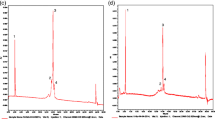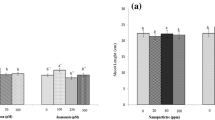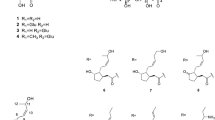Abstract
Black carrots contain anthocyanins possessing enhanced physiological activities. Explants of young black carrot shoots were cultured in Murashige and Skoog (MS) medium for callus initiation and were transferred to new MS medium supplemented with four different combinations of 2,4-dichlorophenoxyacetic acid and kinetin. Subsequently, the lyophilized calli and black carrot harvested from fields were subjected to ultrasound extraction with ethanol at a ratio of 1:15 (w:v). Obtained extracts were applied to various human cancer cell lines including MCF-7 SK-BR-3 and MDA-MB-231 (human breast adenocarcinomas), HT-29 (human colon adenocarcinoma), PC-3 (human prostate adenocarcinoma), Neuro 2A (Musmusculus neuroblastoma) cancer cell lines and VERO (African green monkey kidney) normal cell line by MTT assay. The highest cytotoxic activity was achieved against Neuro-2A cell lines exhibiting viability of 38–46 % at 6.25 μg/ml concentration for all calli and natural extracts. However, a significantly high IC50 value of 170.13 μg/ml was attained in normal cell line VERO indicating that its natural counterpart is an ideal candidate for treatment of brain cancer without causing negative effects to normal healthy cells.


Similar content being viewed by others
References
Sreelatha S, Padma PR (2009) Antioxidant activity and total phenolic content of Moringa oleifera leaves in two stages of maturity. Plant Foods Hum Nutr 64:303–311
Snyder SM, Low RM, Stocks JC, Eggett DL, Parker TL (2012) Juice, pulp and seeds fractionated from dry climate primocane raspberry cultivars (Rubusidaeus) have significantly different antioxidant capacity, anthocyanin content and color. Plant Foods Hum Nutr 67:358–364
Kammerer D, Carle R, Schieber A (2003) Detection of peonidin and pelargonidin glycosides in black carrots (Daucuscarota ssp. sativus var. atrorubens Alef.) by high-performance liquid chromatography/electrospray ionization mass spectrometry. Rapid Commun Mass Spectrom 17:2407–2412
Khandare V, Walia S, Singh M, Kaur C (2011) Black carrot (Daucuscarota ssp. sativus) juice: processing effects on antioxidant composition and color. Food Bioprod Process 89:482–486
Yu L, Haley S, Perret J, Harris M, Wilson J, Qian M (2002) Free radical scavenging properties of wheat extracts. J Agric Food Chem 50:1619–1624
Yu L, Zhou K, Parry J (2005) Antioxidant properties of cold-pressed black caraway, carrot, cranberry and hemp seed oils. Food Chem 91:723–729
Netzel M, Netzel G, Kammerer DR, Schieber A, Carle R, Simons L, Bitsch I, Bitsch R, Konczak I (2007) Cancer cell antiproliferation activity and metabolism of black carrot anthocyanins. Innov Food Sci Emerg 8:365–372
Kirca A, Ozkan M, Cemeroglu B (2006) Stability of black carrot anthocyanins in various fruit juices and nectars. Food Chem 97:598–605
Sun T, Simon PW, Tanumihardjo SA (2009) Antioxidant phytochemicals and antioxidant capacity of biofortified carrots (Daucuscarota L.) of various colors. J Agric Food Chem 57:4142–4147
Arscott SA, Tanumihardjo SA (2010) Carrots of many colors provide basic nutrition and bioavailable phytochemicals acting as a functional food. Compr Rev Food Sci F 9:223–239
Montilla EC, Arzaba MR, Hillebrand S, Winterhalter P (2011) Anthocyanin composition of black carrot (Daucuscarota ssp. Sativus var. atrorubens Alef.) cultivars antonina, beta sweet, deep purple, and purple haze. J Agric Food Chem 59:3385–3390
Metzger BT, Barnes DM, Reed JD (2008) Purple Carrot (Daucuscarota L.) Polyacetylenes decrease lipopolysaccharide-induced expression of inflammatory proteins in macrophage and endothelial cells. J Agric Food Chem 56:3554–3560
Ravindra PV, Narayan MS (2003) Antioxidant activity of the anthocyanin from carrot (Daucuscarota) callus culture. Int J Food SciNutr 54(5):349–355
Akay S, Alpak I, Yesil-Celiktas O (2011) Effects of process parameters on supercritical CO2 extraction of total phenols from strawberry (Arbutusunedo L.) fruits: an optimization study. J Sep Sci 34:1925–1931
Yesil-Celiktas O, Ganzera M, Akgun IH, Sevimli C, Korkmaz KS, Bedir E (2009) Determination of polyphenolic constituents and biological activities of bark extracts from different Pinus species. J Sci Food Agric 89:1339–1345
Thompson EW, Paik S, Brünner N, Sommers CL, Zugmaier G, Clarke R, Shima TB, Torri J, Donahue S, Lippman ME (1992) Association of increased basement membrane invasiveness with absence of estrogen receptor and expression of vimentin in human breast cancer cell lines. J Cell Physiol 150(3):534–544
Jing P, Bomser JA, Schwartz SJ, He J, Magnuson BA, Giusti MM (2008) Structure-function relationships of anthocyanins from various anthocyanin-rich extracts on the inhibition of colon cancer cell growth. J Agric Food Chem 56:9391–9398
Kim SM, Chung MJ, Ha TJ, Choi HN, Jang SJ, Kim SO, Chun MH, Do SI, Choo YK, Park YI (2012) Neuroprotective effects of black soybean anthocyanins via inactivation of ASK1-JNK/p38 pathways and mobilization of cellular sialic acids. Life Sci 90:874–882
Moneruzzaman Kandaker M, Nasrulhaq Boyce A, Osman N, Sharif Hossain A (2012) Physiochemical and phytochemical properties of wax apple as affected by growth regulator application. The Sci World J 1–13. doi:10.1100/2012/728613
Estrada-Zúñiga ME, Arano-Varela H, Buendía-González L, Orozco-Villafuerte J (2012) Fatty acids, phenols content, and antioxidant activity in Ibervilleasonorae callus cultures. Rev Mex Ing Quim 11(1):89–96, ISSN: 1665–2738
Acknowledgements
Access to the facilities of Animal Cell Culture and Supercritical Fluid Technology Laboratories of Bioengineering Department at Ege University is highly appreciated.
Conflict of Interest
Authors declare not to have any conflict of interest.
Author information
Authors and Affiliations
Corresponding author
Rights and permissions
About this article
Cite this article
Sevimli-Gur, C., Cetin, B., Akay, S. et al. Extracts from Black Carrot Tissue Culture as Potent Anticancer Agents. Plant Foods Hum Nutr 68, 293–298 (2013). https://doi.org/10.1007/s11130-013-0371-z
Published:
Issue Date:
DOI: https://doi.org/10.1007/s11130-013-0371-z




